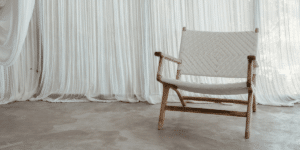A home is not something that has to be finished. Many people feel pressure to decorate and organize their space perfectly, thinking that once everything is in place, their home will be complete. But a home is not a project with a final deadline. It changes and grows over time, just like the people living in it. Embracing this idea makes decorating and organizing feel less stressful and more enjoyable.
Creating a home should be seen as a process, not a race. There is no need to have every room perfectly styled right away. Rushing to fill a space with furniture and decorations just to make it look “done” can lead to choices that don’t truly reflect personal taste or needs. Giving a home time to evolve allows it to become a space that feels more natural and meaningful.
Personal style changes over time, and so do needs. A space that feels right today might need adjustments in a few months or years. Being open to change makes it easier to create a home that always feels comfortable and functional. Instead of feeling frustrated that a room isn’t perfect yet, focusing on small, gradual improvements makes the process more rewarding.
Life events often influence how a home evolves. Moving in with a partner, having children, adopting a pet, or even changing jobs can all affect how a space is used. A home should be flexible enough to adapt to these changes. Keeping things simple and open-ended allows for easy adjustments without feeling like everything needs to be redone.
Letting a home evolve also means letting go of unnecessary pressure to follow trends. Social media and home decor magazines often show picture-perfect spaces, making it easy to feel like a home needs to look a certain way. But real homes are lived in, not just styled for photos. A home should be a reflection of personal tastes and daily routines, not just a copy of the latest trend. Choosing pieces and layouts that feel right instead of what looks popular creates a space that feels truly personal.
Decorating over time also allows for better financial decisions. Buying everything at once can be expensive, and rushing into purchases often leads to regrets. Adding pieces slowly gives time to find items that fit well and have lasting value. A carefully chosen piece of furniture or artwork will feel more special than a rushed purchase made just to fill space.
Sentimental and collected items add character to a home. Over time, a space fills with pieces that hold personal meaning—a painting from a favorite trip, a handmade gift from a friend, or a vintage piece discovered at a local shop. These items make a home feel unique and layered. Allowing space for these pieces to enter naturally creates a more authentic and inviting atmosphere.
Functionality is just as important as style. A home should work well for daily life. This means arranging furniture to suit routines, keeping storage practical, and being open to changing things as needed. What works one year might not work the next. Adjusting layouts and organization based on how a space is actually used makes living in it more enjoyable.
Letting a home evolve also means accepting imperfections. Not every room will look perfect all the time, and that’s okay. A well-loved home has signs of daily life—books left open, cozy blankets thrown on a couch, or art supplies spread across a table. These little details show that a home is being lived in and enjoyed.
Patience is key when building a home that truly feels right. Rushing to complete every room can take away from the experience of enjoying the space. Taking time to find inspiration, experiment with layouts, and add meaningful details creates a home that feels both personal and comfortable.
Letting go of the idea that a home has to be finished brings more freedom. Instead of feeling pressure to complete a checklist, focusing on the process allows for creativity and flexibility. A home is always changing, just like the people in it. Embracing this idea makes home decorating feel less stressful and more enjoyable.













